1. Come straight to the point and explain the phenomenon
(1) It is known that there is a PC of Linux system and a PC of Windows system in the network environment. Before connecting PPPoE, the IP addresses of relevant physical network cards are as follows:
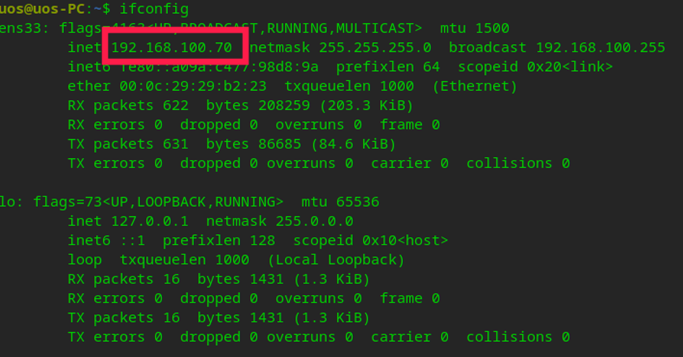
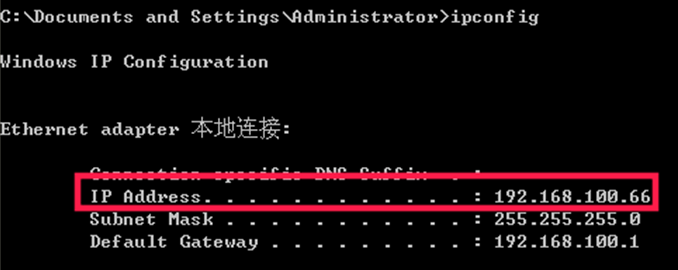
(2) If a PPPoE server has been set up in the current network environment, Linux and Windows can be connected to PPPoE respectively, as shown in the following figure:
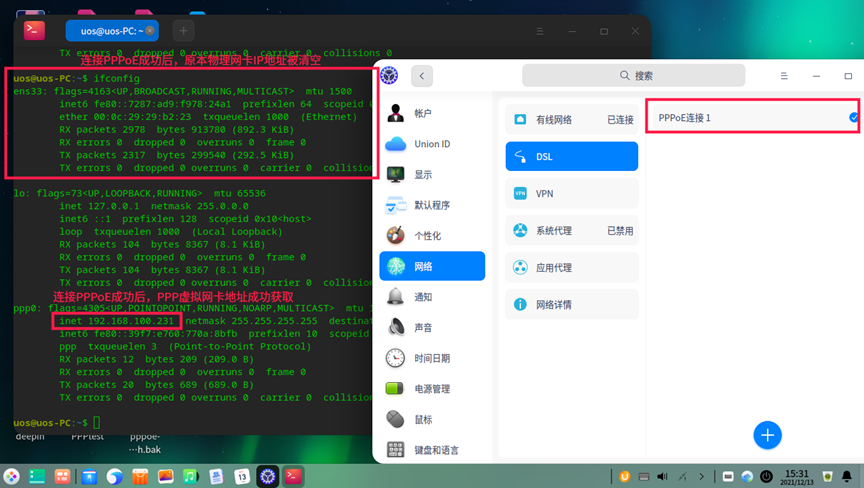
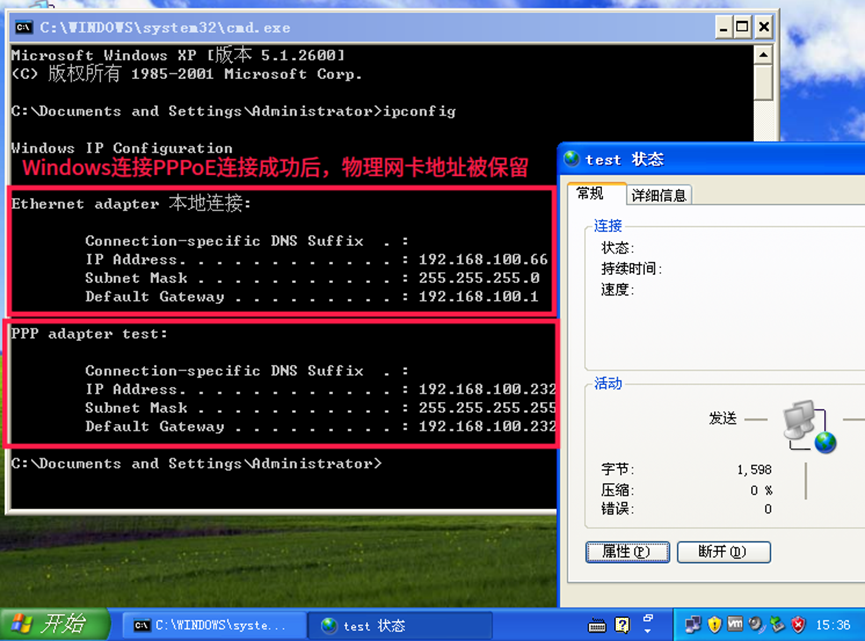
(3) It can be seen that after Linux system and Windows system are connected to PPPoE respectively, Linux does not retain the address of the original physical network card, but Windows retains it. It should be noted that the situation of not retaining the IP address after successfully connecting to PPPoE exists on all Linux distributions based on NetworkManager service, which is not unique to certain Linux distributions.
2. The limitation and impact caused by not retaining the physical network card after Linux is connected to PPPoE
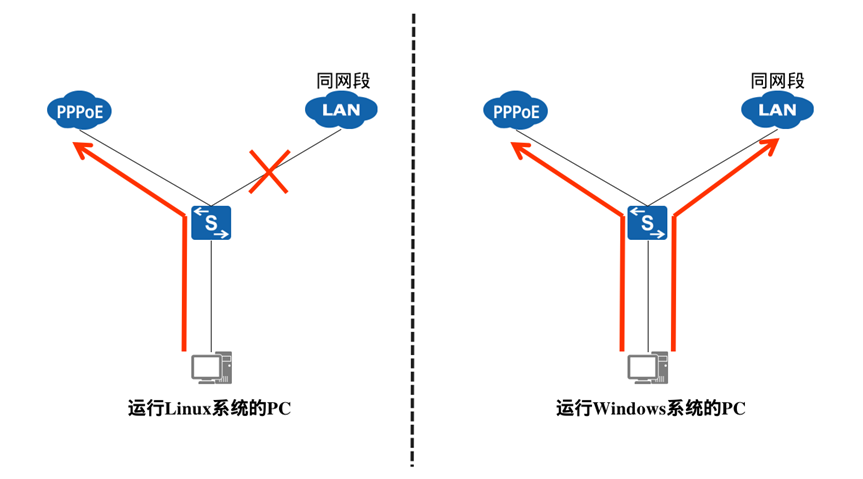
As shown in the figure above, after Linux and Windows systems are connected to PPPoE respectively, Because the IP address of the original physical network card is cleared, Linux cannot connect with the original LAN in the same network segment (local area network) for network communication. Because the IP address of the original physical network card is reserved, Windows can still maintain normal network communication with the LAN of the same network segment. If the original LAN has cross network segments, because the default route is changed after connecting PPPoE, it needs to add a route manually in the PC to communicate.
3. How to keep the IP address to maintain communication with the original LAN
After testing, the nmcli or nmtui in the NetworkManager service of Linux cannot retain the original IP address. From the command line, the original physical network card and PPP virtual network card can only keep one network card active with * sign at the same time, as shown in the following figure:
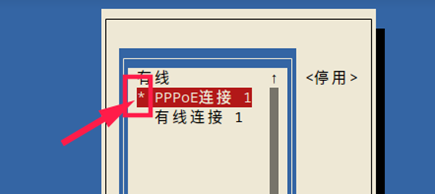

Although the service cannot permanently retain the IP address of the physical network card, we can still reconfigure the original IP address by "ifconfig < physical network card name > < IP address >" to achieve the retention effect. The original IP address is 192.168 Take 100.70 as an example, as shown in the figure below:

The final effect is as follows:
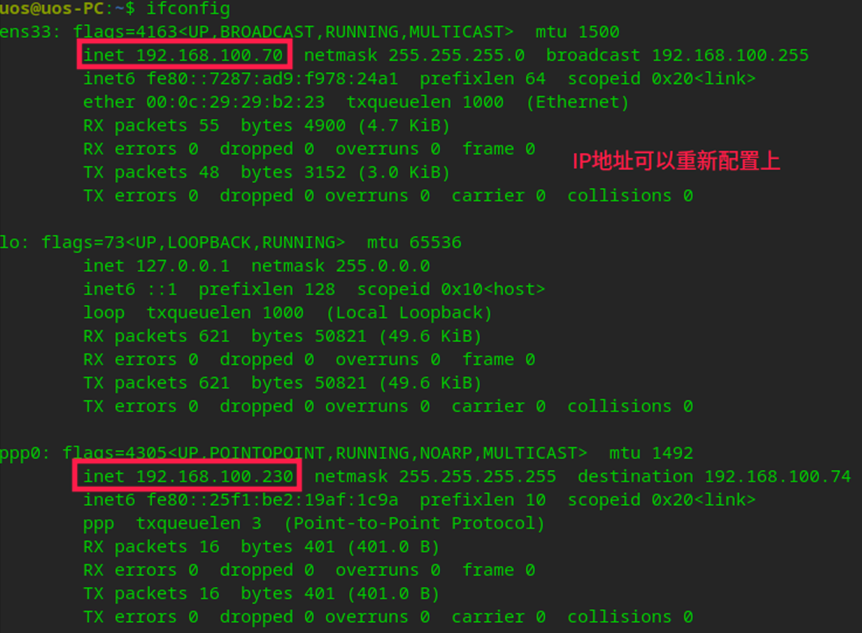
For users familiar with Linux command line, this method can solve the problem of original LAN network communication interruption caused by non reservation of IP address.
4. Improve PPPoE experience on deepin or UOS through Shell scripts
On operating systems such as deepin and UOS with graphics, which are one of the Linux distributions, if you restart while maintaining the PPPoE connection, the system will automatically connect to the PPPoE after the restart, resulting in the original physical network card having no time to obtain the IP address, so that users do not know which address to configure to the physical network card, Moreover, it is too cumbersome for users to configure the IP address through the command line every time. At this time, you can consider solving this problem through the following Shell script: (for other Linux distributions, such as Ubuntu and Ukylin, you can actually modify the template according to this script)
#!/bin/bash
username=`cat /etc/passwd | grep 1000:1000 | awk -F: '{print $1}'`
defaultInterfaceName=`route -n | sed -n '3p' | awk '{print $8}'`
defaultInterfaceIPaddr=`ifconfig ${defaultInterfaceName} | grep broadcast | awk '{print $2}'`
#In / etc / udev / rule D Directory - 82 PPPoE saveipaddr Rules to implement the script ifconfigipaddr when the PPP virtual network card is started sh
function createPPPoEUdevRule(){
touch /etc/udev/rules.d/82-pppoe-saveIPaddr.rules
touch /etc/ppp/ifconfigIPaddr.sh
echo "SUBSYSTEM==\"net\",ACTION==\"add\",KERNEL==\"ppp*\" RUN+=\"/etc/ppp/ifconfigIPaddr.sh\"" > /home/${username}/Desktop/82-pppoe-saveIPaddr.rules
mv /home/${username}/Desktop/82-pppoe-saveIPaddr.rules /etc/udev/rules.d/
chmod 644 /etc/udev/rules.d/82-pppoe-saveIPaddr.rules
}
#Write udev rule 82 PPPoE saveipaddr The shell script ifconfigipaddr. Needs to be executed in rules SH and the text file defaultrouteinterfaceandipaddr that stores the default network card name and IP address txt
function createIfconfigIPaddr_sh(){
echo $defaultInterfaceName > /home/${username}/.defaultRouteInterfaceAndIPaddr.txt
echo $defaultInterfaceIPaddr >> /home/${username}/.defaultRouteInterfaceAndIPaddr.txt
chown ${username} /home/${username}/.defaultRouteInterfaceAndIPaddr.txt
chgrp ${username} /home/${username}/.defaultRouteInterfaceAndIPaddr.txt
cat << EOF > /etc/ppp/ifconfigIPaddr.sh
#!/bin/bash
username=\`cat /etc/passwd | grep 1000:1000 | awk -F: '{print \$1}'\`
ifconfig \`sed -n '1p' /home/\${username}/.defaultRouteInterfaceAndIPaddr.txt\` \`sed -n '2p' /home/\${username}/.defaultRouteInterfaceAndIPaddr.txt\`
EOF
chmod a+x /etc/ppp/ifconfigIPaddr.sh
}
#Measures for Linux to lose the IP address of the physical network card again when connecting to PPPoE by default after restarting the system
function afterRestartSystem(){
cat << EOF > /home/${username}/.findIPaddrAndInterfaceName.sh
#!/bin/bash
username=\`cat /etc/passwd | grep 1000:1000 | awk -F: '{print \$1}'\`
defaultInterfaceName=\`route -n | sed -n '3p' | awk '{print \$8}'\`
defaultInterfaceIPaddr=\`ifconfig \${defaultInterfaceName} | grep broadcast | awk '{print \$2}'\`
echo \$defaultInterfaceName > /home/\${username}/.defaultRouteInterfaceAndIPaddr.txt
echo \$defaultInterfaceIPaddr >> /home/\${username}/.defaultRouteInterfaceAndIPaddr.txt
EOF
chmod a+x /home/${username}/.findIPaddrAndInterfaceName.sh
echo "nmcli connection down \`nmcli connection show --active | grep pppoe | awk '{print \$(NF-2)}'\`" >> /etc/profile
echo "sleep 4" >> /etc/profile
echo "bash ~/.findIPaddrAndInterfaceName.sh" >> /etc/profile
}
#function call
createPPPoEUdevRule
createIfconfigIPaddr_sh
afterRestartSystem
[note] this script can optimize the PPPoE operation experience on deepin and UOS systems, but it still can't cope with some scenarios - for example, the IP address is changed during use without restarting the computer (for example, the IP address is changed due to the probability of DHCP lease expiration).